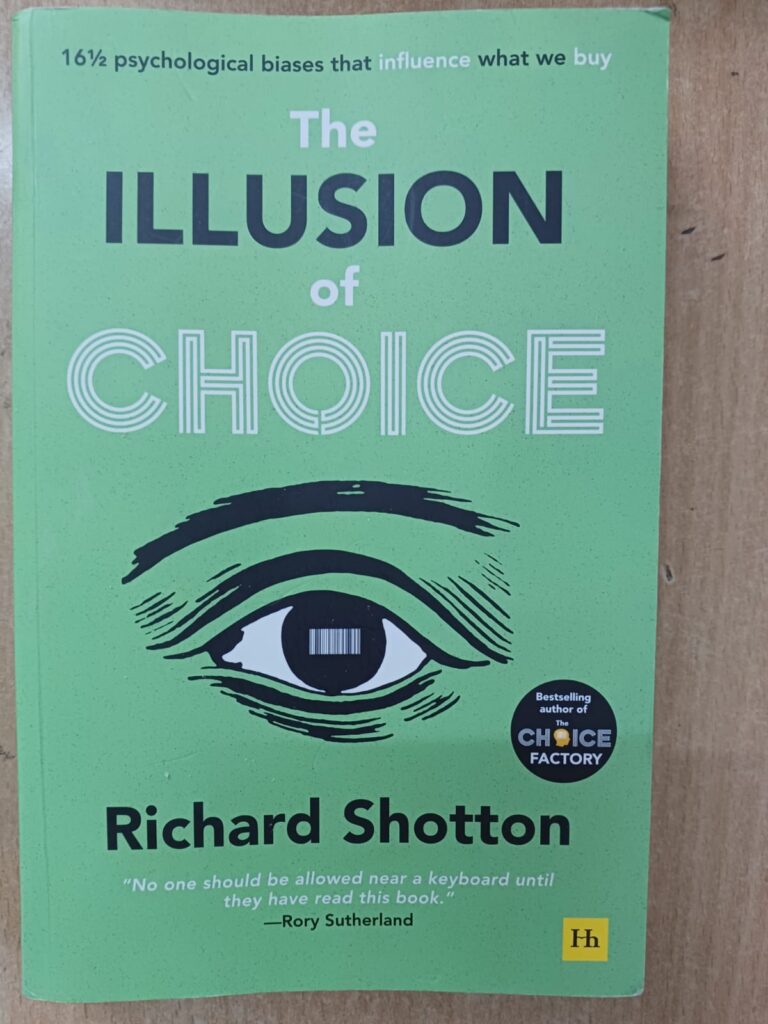Reviewed by K.S.Loganathan
Richard Shotton is an author, social-influence researcher, and consultant who applies behavioural science to marketing. This is his second book. In his first book, The Choice Factory(2018), he described 25 behavioural biases that influence consumer decisions. In this book, he identifies 16.5 psychological biases that influence what we buy. The book devotes a chapter to each quirk that can be turned to a marketer’s advantage ; each idea springs as the writer goes through a hypothetical day(ending curiously with a memory fault in the last chapter titled ‘The Peak-end Rule’ which exhorts you to “end on a high” !). The book is written in a nonacademic, conversational style.
Since the 1890s, behavioural science, which has roots in social psychology, has identified thousands of hidden drivers of human behaviour . In the early days, most of these were derived from experiments in artificial, academic settings, with students as participants ; however, nowadays monadic testing is done in realistic settings in a larger, but closely monitored way. Shotton shares academic and real – world stories that can be applied in practice . In applying these ideas, it is better to conduct field experiments than to directly question the customer, he says. Shops and establishments with sales outlets are well placed to conduct limited studies to verify these ideas before adopting them.

The title ‘Illusion of Choice’ is based on one of the chapters “Freedom of Choice,” which actually deals with how influencers must take culture and customer loyalty into account and couch the language in their messages to reduce customer reactance .(From the consumer’ s standpoint, however, it is unnerving to learn how easily and frequently we can fall victim to the influence process in our daily lives or become indoctrinated , by the practitioners’ requests for purchases, donations, civic cooperation, votes etc.) .Caveat Emptor !
Due to the proliferation (or should we say the illusion) of choice in the decisions we make, we are tempted to take shortcuts on the basis of a single, usually reliable, piece of Information, known in the trade as an anchor. A variety of techniques are employed by influencers to nudge the customers into making a shortcut decision. If marketers want to reshape consumer behaviour , they must time their efforts at the start of the week, month, birthdays etc. when people are willing to make a fresh start. These offerings may also be combined with cues or uncertain rewards .
Perception of fairness shapes consumer behaviour. When raising prices, mitigate customer reactance by explaining the increase in terms of a rise in wage, taxes or raw material costs .The foot-in-the-door technique is the tactic of starting with a little request and progressively escalating commitments to induce individuals to perform major favours.Such commitments can turn prospects into customers and citizens into public servants.Humour in messaging helps people recall the message and builds trust . A bit of mental processing on the part of the reader , as well as rhyme and alliteration , may be built in the adcopy to ensure stickiness.
The “16.5” psychological biases in the subtitle is a marketing ploy to show that consumers prefer precise, rather than round numbers, and that charm or surge pricing should employ precision , regardless of the underlying value.
Overall this book is useful in gaining an insight into the levers that are used in the psychology of persuasion by marketers, at the present time. The book contains useful references for further reading. For a fuller understanding, the reader should refer to Robert Caldini’s classic text, “Influence, New and Expanded” (2021) edition.
I thank Pan Macmillan for the review copy.











